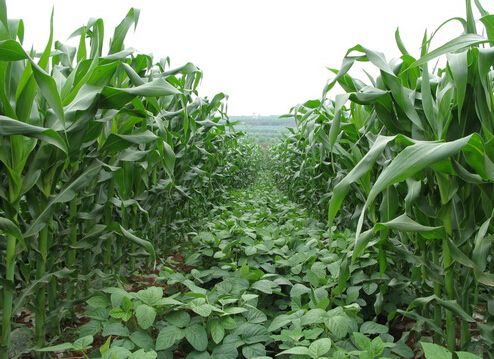Malin interplanting summer corn Summer soybean is an effective stimulation technology for planting food crops in summer. What are the main points that should be mastered by Mailin? Let's take a look at the Xiaonong.com. There are three forms of wheat and summer soybeans in the wheat forest: one is the wheat in the summer, the second is the summer soybean, and the third is the corn and soybean. What are the benefits of wheat forest interplanting summer corn and summer soybean? First, it is possible to give birth early, to benefit and avoid disadvantages, and to broadcast corn and soybeans after wheat. The key period of production is met with drought, and the yield is not high and unstable. The order of wheat and soybeans is adopted. Around the day, when the seedlings emerge from the forest, they encounter favorable climatic conditions, rapid growth and development, and can avoid the adverse effects of drought in key periods, which is beneficial to high yield and stable yield. Secondly, it is conducive to the fight for the whole seedlings, the shade of the forest to keep the shade, and the set of seedlings can be broadcast all over the seedlings; while the live broadcast of the wheat is often due to the tillage and the release of the seedlings. Third, it can alleviate the damage of corn mash and pea pods. According to the survey, the damage rate of corn ear is generally only 7.2%, which is 35% lower than the live broadcast rate after wheat. Soybeans are completely immune to the three generations of pods. The order of the wheat and summer soybeans should be as follows: 1. Appropriate point set. Before sowing, we must do a good job in seed preparation such as seed selection, sun-dried seeding, and chemical dressing. Generally, it should be set 10 to 15 days before the wheat harvest. Interplanting too early, corn, soybean seedlings and wheat symbiotic period is long, easy to become weak and unfavorable high yield. 2. Reasonable close planting. The wheat interplanting corn is generally 50-60 cm in row spacing, and the plant spacing is 25-30 cm, with more than 4,000 plants per mu. Mailin points soybeans, line spacing 40 cm, nest distance 25 cm, 4 to 5 seeds per nest, 3 to 4 seedlings, to ensure more than 6000 nests per acre, 2 to 25,000 seedlings. Mailin points to corn and soybeans. The corn is wide and narrow, 170 cm wide, 30 cm narrow, 30 cm per plant, 3000 plants per mu; 4 rows of soybeans in a wide row of corn, 33 cm spacing, 30 cm spacing, 4 to 5 seeds per seeding, 3 to 4 seedlings, 4,400 nests per acre, 1.3 to 17,000 seedlings. 3. Fine management. After the corn and soybeans are out of the forest, they should be killed early, early seedlings, early topdressing, early treatment of insects, and strive to set up a high-yield shelf early, laying a good foundation for high yield. After the corn is released from the forest, 4 to 5 leaves, heavy chasing seedlings, 20 kg of ammonium bicarbonate or 7-8 kg of urea, 15-20 kg of superphosphate, 10 kg of potassium chloride per acre. In the trumpet period, the attacking and applying fertilizer is applied, and 25-30 kg of ammonium bicarbonate is applied per mu. After the soybean is released from the forest, 20 to 25 kg of calcium phosphate and 10 kg of ammonium bicarbonate are applied per mu, which promotes growth, increases flowers and increases pods. 4. Soybean sprayed with boron. After soybean pods, the nutrients produced by the leaves are often difficult to transfer to the kernels due to the lack of boron. The pods cannot be properly bulged to form small pods and empty pods. This phenomenon is easy to occur when the soil effective boron content is less than 0.5 microgram per kilogram. If the temperature is high or dry, rain, improper fertilization, and heavy cultivation will aggravate the disease. To prevent "pod and not real" disease, it is advisable to use 100 gram of borax or boric acid and 50 kg of water on the basis of reasonable irrigation and irrigation, and apply the leaf surface during the full bloom period. Wiggle wire lock is designed to be used with poly lock base cap- sold separately. Greenhouse wiggle wire and base care are an effective method of attaching your poly film roof and or shade cloth. The greenhouse wiggle wire lock will hold form 4 mil to 20 mil thickness of material. Use one wire to hold the roof in place and then add a second wire to hold your shade cloth. When it is time to remove the shade cloth, you will not disturb the roof plastic. Greenhouse Wiggle Wire,Greenhouse Steel Wire,Greenhouse Spring Wire JIANGSU SKYPLAN GREENHOUSE TECHNOLOGY CO.,LTD , https://www.engreenhouse.com
Universal Base (WIG2000)- used on the curved surface, i.e. the arch for attaching the end wall covering.
Standard Base (WIG1000) - used along the straight lengths of your greenhouse.